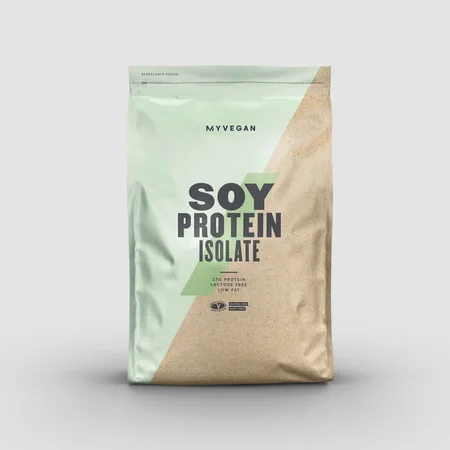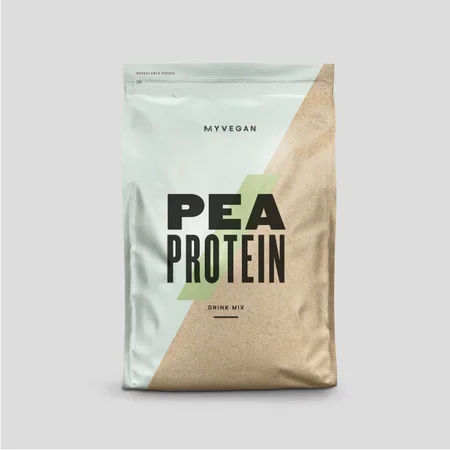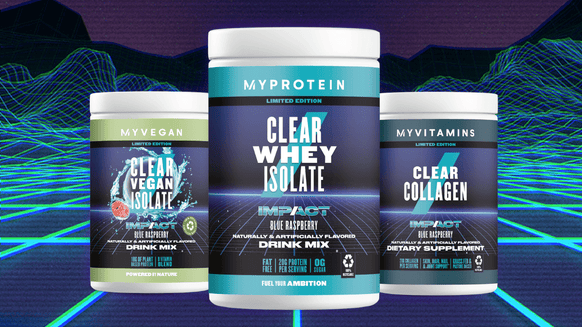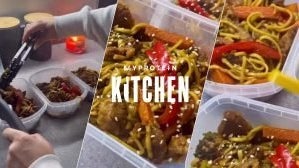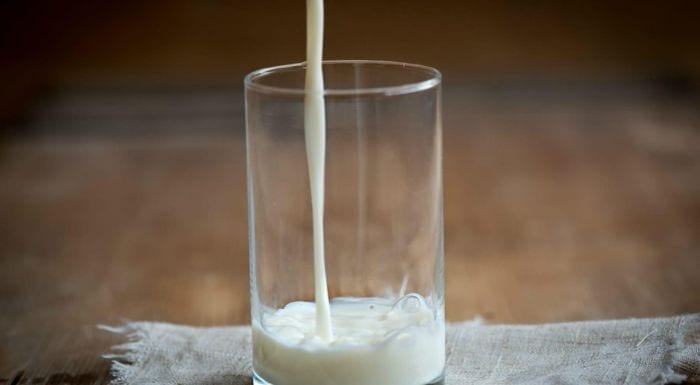
Plant-based and dairy-free milks have become very popular in the past few years for a number of reasons. However, when replacing cow’s milk with an alternative beverage, there are many factors to consider. While nutrition of dairy-free milks varies from cow’s milk (in protein, fat, sugar, vitamin and mineral content), they also vary in cost, shelf life, flavor, and availability. Most dairy-free milks are made from a plant food that has been soaked in water then drained, resulting in a cloudy white liquid that resembles traditional milk.
In this article, you’ll find:
Why do we drink milk?
Dairy-free alternatives
Why you would want to try dairy-free milk
Things to consider before you switch
Why do we drink milk?
Most of us grew up drinking cow’s milk, and it’s still recommended as the primary beverage for children under age 2 who are growing rapidly and no longer breastfeeding or drinking formula. It contains the calcium, magnesium, and potassium in addition to the protein and fat (if whole or 2% milk) that helps children meet their dietary needs.
Types of Dairy-Free Milk Alternatives
Food and technology researchers group dairy-free milk alternatives into the following five categories based on their source:1
Cereal based: includes oat milk, rice milk
Legume based: includes soy milk, peanut milk
Nut based: includes almond milk, coconut milk, cashew milk
Seed based: includes hemp milk, flax milk
Ancient grain based: includes quinoa milk, teff milk
You can see there are many options and categories for dairy-free alternative milks, and this list doesn’t include them all. However, these are the types of dairy-free milks you’re most likely to see at your local supermarket: soy milk, almond milk, coconut milk, rice milk, cashew milk. Soy milk has been a popular alternative to cow’s milk for many years, while many of the other alternative milks have not been widely available for very long. The different types of dairy-free milks vary greatly in calorie and nutrition content.
Now we will compare the nutrition profiles of the most popular alternative milks. Each brand varies a bit but the following numbers are an average representation per cup for unflavored versions. Calcium and vitamin content depend on fortification.
Soy Milk: 90 calories, 8 grams of protein, 5 grams of fat, 1-2 grams sugar.4
Soy milk is one of the first alternative milks that is still popular on the market today. It naturally contains protein comparable to dairy milk and works well as a cooking or baking substitute.
Almond Milk: 40 calories, 1g protein, 3g fat, 1 g sugar.3
Almond milk is a great low-calorie choice but contains hardly any protein. It is available in many different flavors and blends. It’s a flavorful substitute in smoothies and protein shakes.
Coconut Milk Beverage: 50 calories, 0g protein, 4 g fat, 0 g sugar.5
Coconut milk beverage has a naturally sweet flavor and thin consistency making it a good alternative for anyone who needs to avoid almonds and other nuts. However, it also provides limited nutrition unless fortified.
Rice Milk: 85 calories, 0 grams protein, 2 grams fat, 5 grams sugar.6
Slightly sweet and starchy, rice milk is a shelf stable alternative milk that you can find in many stores. It has many varieties and is often a thinner liquid like skim milk. It is another good option for those with many food allergies.
Cashew Milk: 35 calories, 1 g protein, 2 g fat, 0 g sugar.7
Cashew milk has a creamy consistency and pleasant flavor that has made it more popular in recent years. Like almond milk, it is a low carb alternative that is great to use in smoothies and shakes.
One note about coconut milk — for the purposes of dairy-free milk alternatives, consider the refrigerated, low calorie coconut milk beverage, not the canned product with solid coconut oil included. Canned coconut milk is most often used for cooking and not as a substitute for dairy milk.
Why You May Want to Try a Dairy-Free Milk Alternative
Before we discuss the different types of dairy-free milks and their benefits and drawbacks, let’s think about the many reasons that someone might choose a dairy-free alternative to traditional cow’s milk.
1. Allergy / Intolerance
A primary reason for avoiding cow’s milk is when a person is allergic to milk protein or has a lactose intolerance. A true food allergy to milk is likely attributed to either whey or casein, the two primary proteins in dairy milk. This often requires avoiding other dairy foods as well.
An intolerance to a food is not as severe as the body’s response to an allergy, but can cause a wide variety of other symptoms that make people avoid a certain food — inflammation, gastrointestinal discomfort, etc. Some people can tolerate lactose-free milk or consume milk with the help of a medication that breaks down lactose, while others choose to avoid cow’s milk products altogether.
2. Calories / Carbs
Because many alternative milks are primarily water, they can be significantly lower in calories and carbohydrates than even fat-free dairy milk. For example, a cup of skim cow’s milk contains 80 calories and 12 grams of carbs, while plain unsweetened almond milk has 35 calories and 2 grams of carbs.2,3 Keep in mind that the carbs in plain cow’s milk are mostly from lactose, or milk sugar.
Non-dairy milk doesn’t taste sweet and isn’t the same as the added sugars in chocolate milk or soda. For anyone trying to limit their calorie or carbohydrate intake, including those trying to lose weight or better manage their blood sugar, an unsweetened alternative milk can be a great choice. They can be a tasty alternative to water in smoothies or protein shakes. However, many products have added sugars and fall short in other categories — which we will discuss later.
4. Cholesterol and fat
Because cow’s milk is an animal-based product, it naturally contains some cholesterol (skim has about 5mg in a cup).2 Anyone who is trying to monitor or limit their cholesterol intake would benefit from an alternative plant-based milk, as plant products don’t inherently contain any cholesterol.
Regular or “whole” cow’s milk contains about 8 grams of fat, 5 of which come from saturated fat. Saturated fat is the type of fat that can lead to heart disease and other health problems.8 While there are several varieties of reduced fat and fat-free milk on the market as well, many people prefer the taste and texture of whole milk.
5. Plant-based diets
Even without health concerns, some people prefer to follow vegetarian and vegan diets or otherwise limit animal-based foods for environmental or animal welfare reasons. Alternative milks and their accompanying products (like dairy-free yogurt, cheese, and ice cream) are popular among those following plant-based diets.
6. Functional foods
Although cow’s milk is a natural source of many nutrients, like protein and calcium, plant-based milk alternatives can be sources of other powerful nutrients that are appealing to those searching for functional foods with health benefits. Soy milk contains isoflavones and phytosterols, which can help protect against disease and lower cholesterol.1 Rice milk is also high in phytosterols that can help protect against oxidative damage and chronic disease.1 Oat milk contains the protective effects of beta-glucan, which has been associated with improving cholesterol, while almond milk contains arabinose, a prebiotic compound, and coconut milk contains lauric acid which aids in immunity and promotes brain development.1
7. Environmental impact
Others may choose plant-based dairy-free milks to reduce the environmental impact of cow’s milk. There is a movement to reduce the amount of food waste and energy that it takes to contribute to our food supply. However, depending on the processing of the alternative milk you choose, there may be additional food waste from the production process.
8. You can make them at home
If you have almonds, cashews, or oats on hand, you can find recipes online to make your own dairy-free milk alternatives — far easier than milking a cow every morning. Often they involve soaking the starting product in water for several hours, blending and then straining the solids to reserve the “milk” left behind. Homemade “milks” with no other additives may be the purest option (with nothing added) but will often have a shorter shelf life than a commercially prepared product. Making your own dairy-free milk at home will also not have the benefits of added calcium, vitamins, or other nutrients that may be included in packaged products.
Potential Risks/Considerations
There are some potential challenges with choosing dairy-free milk alternatives. Consider these challenges before you ditch your cow’s milk completely:
Nutritional needs: do you depend on milk and other dairy products for protein and calcium? Although alternative milks can be low in fat and calories, they often do not naturally have much protein or calcium, but many are supplemented. Be a food label detective and see exactly how they measure up when making your choice. If you avoid all dairy sources of calcium, make sure to get it from other foods like leafy green vegetables.
Different appearance, taste and texture: many dairy-free milks don’t have the same texture or mouth feel as regular cow’s milk, mostly due to their processing. They are often a thinner liquid and may or may not be white in color, while some may have thickeners added. Some can also separate when they sit, so it’s important to shake them well and store them according to the manufacturer’s directions. Although many are shelf stable before opening, they may also have a shorter shelf life than dairy milk. Unflavored versions may have very little taste, while others may not taste much like the products they’re made from.
Added sugars: dairy-free milks aren’t just limited to plain versions, but many different flavors and varieties are on the market. However, this often means lots of added sugars. In addition to checking the label for protein and calcium, see how much added sugar has been put in during processing. It’s best to look for “unsweetened” on the label instead of a chocolate or vanilla flavor. When flavors are added for taste, dairy-free milks can end up being even higher in carbs than regular milk.
Take Home Message
The number of dairy-free milk alternatives on the market continues to grow and their nutritional content varies greatly. If you’re considering replacing dairy milk in your diet, make sure you choose an unsweetened milk alternative that has calcium and other nutrients added to it. If you make your own dairy-free milk at home, make sure you’re getting other sources of calcium and protein in your diet. Any milk or dairy-free alternative can be part of a healthy diet when you consider your personal nutritional needs and goals.

Claire is a Registered Dietitian through the Academy of Nutrition and Dietetics and a board-certified Health and Wellness Coach through the International Consortium for Health and Wellness Coaching. She has a Bachelor of Science in Biology and a Master’s degree in Clinical Dietetics and Nutrition from the University of Pittsburgh.
Talking and writing about food and fitness is at the heart of Claire’s ethos as she loves to use her experience to help others meet their health and wellness goals.
Claire is also a certified indoor cycling instructor and loves the mental and physical boost she gets from regular runs and yoga classes. When she’s not keeping fit herself, she’s cheering on her hometown’s sports teams in Pittsburgh, or cooking for her family in the kitchen.
Find out more about Claire’s experience here.
1. Sethi, S., Tyagi, S. K., & Anurag, R. K. (2016). Plant-based milk alternatives an emerging segment of functional beverages: a review. Journal of food science and technology, 53(9), 3408-3423.
2. “Nonfat milk”. Nutrition Data. Self.com, 2018. Web. 22 Oct. 2019.
3. “Almond milk, Blue Diamond, Unsweetened”. Nutrition Data. Self.com, 2018. 22 Oct. 2019.
4. “Soy milk”. Nutrition Data. com, 2018. 29 Oct. 2019.
5. “Coconut milk.” Nutrition Data.com, 2018. 29 Oct. 2019.
6. “Rice milk.” Nutrition Data. com, 2018. 29 Oct. 2019.
7. “Cashew milk.” Nutrition Data.com, 2018. 29 Oct. 2019
8. Clifton, P. M., & Keogh, J. B. (2017). A systematic review of the effect of dietary saturated and polyunsaturated fat on heart disease. Nutrition, Metabolism and Cardiovascular Diseases, 27(12), 1060-1080.
